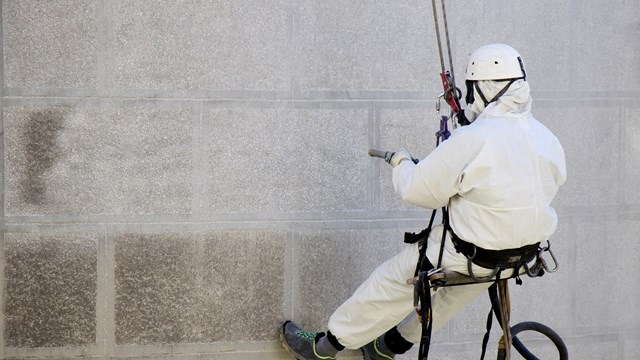Changing the windows in your co-op or condo building can be a traumatic experience. Not only is the
overall building affected, but the interiors of the individual apartments are affected as well. Even if the job goes smoothly, there are bound to be complaints from residents due to inconvenience and minor property damage. Major problems with the overall project and timeliness of completion can result in serious repercussions for everyone. If there are delays, shareholders or unit owners may start to complain. The board of directors may even worry that delays and inconvenience will result in disgruntled shareholders not paying maintenance.
By their nature, window installation projects always involve a lot of money. The fees incurred when the contract is signed are always large because windows have to be manufactured and ordered. A lot of money is expended before the building actually sees what it has gotten for its money. For all of these reasons, it is especially important to spend the time and money to have an attorney knowledgeable in this area negotiate and prepare a contract for the work, and to have the contract signed by both parties before any work is done.
An attorney should review the specifications before they are sent out for bids. Most specifications go beyond stating how the work will be done; they also cross over into legal issues, such as insurance, bonding, termination and final payment. Once the contractors have bid based on these documents, the co-op or condo is locked into these provisions and they will be included in the contract. Unless your attorney is involved from the start, your contract may not be as ironclad as it should be.
Selecting a Contractor
Unlike general contractors, there are far fewer contractors in the window installation industry. When choosing a service provider, you will need to check his track record, and also the record of the manufacturer he will be using. For example, the contractor may be great at installing windows, but the manufacturer may not be able to produce the windows fast enough or there may be quality control problems. So the building really needs to look at both companies.
Obtaining references, and calling those references, is also important. Get names from older jobs, and not just the ones most recently completed. There are many questions you should ask: Have leaks occurred? Was the work completed in a timely fashion? How responsive was the contractor to any problems that may have arisen? It should always be a concern when contractors are difficult to reach and do not return telephone calls promptly.
Fair to Both Sides
The biggest mistake that buildings can make is to present the contractor with a lengthy, onerous contract that has such strict payment terms and so many opportunities for the building to hold back payment, that the contractor cannot help but wonder if he will ever be paid.
The mistake contractors make is going too far in the other direction. Their contracts are often too sketchy and do not give enough detail about how the job will be run. There is also a tendency for payment to be too accelerated relative to the work completed. Both sides should strive for a contract that is fair to all. The contractor must be paid at appropriate intervals, but he should not be paid too far ahead of the percentage of work ffb completed. The architect or engineer can monitor and determine what payment is appropriate relative to the amount of work completed.
In addition, the contractor should have adequate insurance, naming the co-op or condo and the managing agent as additional insureds. The building may also want the contractor to furnish payment and performance bonds. Guarantees are similar to what they would be for any contractor: one year on labor. The manufacturer will cover the windows, and may provide a greater guarantee than one year. Sometimes this issue can be negotiated.
The terms of final payment should be carefully drafted. Some apartments may have been done out of sequence and there will be complaints that need to be addressed. If there is a retainer (as there should be), it should be paid out gradually as final completion is approached.
Most buildings want to see a prototype window before the order is placed. This prototype is usually provided after the contract has been signed. What sometimes happens is that specifications and drawings have not been finalized when the contract is signed. This makes it impossible to order windows, and it can create long delays. If the contractor orders windows based on shop drawings only, they may not be in conformance with the final drawings and specifications. When contractors do this, they take their chances. This unwise practice can result in a major legal dispute.
Installing the Windows
Each contractor has a different sense of how they can do their work most efficiently. They may want to do full floors going from top to bottom. It is usually wise for the building to try to accommodate these desires, since the work will probably proceed faster. The problems in this area occur when the building cannot provide access to the apartments at the pace required by the contractor or the building tries to reorganize the work. If the contractor has to come back to floors where he has already done work, it is less efficient and makes the project take longer.
Sometimes the window installer is also doing other items such as painting lintels and installing child guards. Decisions on which units will be having this work done should be made early in the game to prevent delays and allow the contractor to work most efficiently. Another way to streamline the process is to have residents clear their apartments before the work begins. The work goes faster if the contractors do not have to do this, and it also greatly reduces the risk of property damage.
It is common practice to have one or two windows tested before all the windows are installed; however, the criteria for setting up the tests, and for deciding what will be considered a pass or fail, can be controversial. The architect or engineer and the contractor should agree on the criteria beforehand in order to ensure apples are being compared to apples, and not to oranges. Flawed test criteria can cause the window test to fail and result in needless panic and delay while the project gets back on track.
Testing is another area in which the attorney can help the building avoid legal problems. Legal counsel can assist in determining who will pay for the testing as well as any retesting. At this stage of the window installation process, as in all others, the key to a hassle-free job and the avoidance of legal problems is relying on the guidance of a knowledgeable attorney, a reputable contractor and a reliable architect or engineer.
Ms. Berger is an attorney in New York City who specializes in building construction, real estate and co-op law and litigation.







Leave a Comment